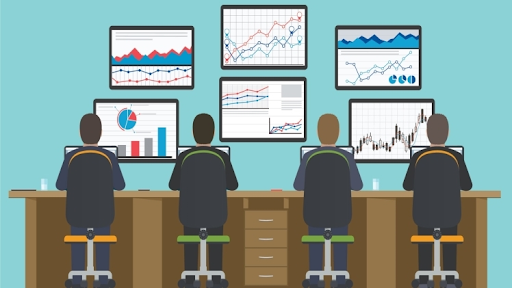In today’s fast-paced and increasingly digital work environment, businesses face the challenge of maintaining productivity, security, and compliance while managing a diverse workforce. Whether dealing with remote teams or on-site employees, companies need effective tools to ensure that projects are completed efficiently and that resources are used optimally. One such tool that has become indispensable is Employee Monitoring Software. This article explores the significance, features, benefits, and best practices for implementing this software, offering insights into how it can revolutionize the way businesses monitor and manage their workforce.
Employee Monitoring Software Overview
Employee monitoring Software is a specialized tool designed to track and monitor employee activities within a business environment. This software helps companies oversee daily operations, manage productivity, ensure security, and maintain compliance with relevant laws and regulations. In modern businesses, Employee Monitoring Software plays a crucial role in enhancing transparency, optimizing work processes, and safeguarding company assets. Additionally, it significantly aids in the monitoring of projects, allowing managers to keep track of progress and ensure that resources are being utilized efficiently. The significance of Employee Monitoring Software cannot be overstated. With the rise of remote work and the increasing need for data security, businesses must be vigilant about how employees spend their time and access company resources. This software helps improve productivity by identifying inefficiencies and potential areas of improvement. Moreover, it ensures that employees adhere to company policies and industry regulations, thereby reducing the risk of legal and financial repercussions.
Key Features of Employee Monitoring Software
To fully understand the value of Employee Monitoring Software, it is essential to examine its key features, which are designed to enhance management and decision-making.
- Time Tracking: This feature records the amount of time employees spend on various tasks, helping managers identify how work hours are allocated and where improvements can be made.
- Screen Monitoring: Screen monitoring allows supervisors to view or record employee screens in real-time, ensuring that tasks are being completed as expected and that sensitive data is not being misused.
- Activity Logging: Activity logging tracks actions such as application usage, websites visited, and files accessed, providing a comprehensive overview of employee behavior during work hours.
- Reporting: Detailed reports generated by the software offer insights into employee productivity, attendance, and adherence to company policies. These reports assist in making informed decisions and identifying trends.
By integrating these features, Employee Monitoring Software empowers businesses to monitor projects effectively, ensuring that they are completed on time and within budget.
Benefits of Employee Monitoring Software
The implementation of Employee Monitoring Software offers numerous benefits for both employers and employees, making it a valuable asset in any workplace.
For Employers:
- Increased Productivity: By tracking time and activities, employers can identify bottlenecks and inefficiencies, leading to better time management and increased output.
- Reduced Operational Costs: By optimizing resource allocation and reducing wasted time, businesses can lower operational costs.
- Improved Remote Work Management: With the rise of remote work, monitoring software ensures that employees remain productive and engaged, even when working from different locations.
For Employees:
- Clear Expectations: Monitoring tools help employees understand what is expected of them, fostering a sense of accountability and purpose.
- Objective Performance Evaluations: The data collected through monitoring can be used to provide objective feedback, helping employees improve and grow in their roles.
Compliance and Privacy Considerations
While Employee Monitoring Software offers many advantages, it also raises concerns about privacy and compliance. It is vital for businesses to use these tools ethically and legally.
Privacy Concerns: Employees may feel that their privacy is being invaded, especially if monitoring is perceived as intrusive. To address these concerns, companies should clearly communicate the purpose of monitoring, how the data will be used, and the measures taken to protect employee privacy.
Compliance with Data Protection Laws: Businesses must ensure that their use of Employee Monitoring Software complies with relevant data protection laws, such as the General Data Protection Regulation (GDPR) in Europe. This includes obtaining consent from employees, minimizing data collection, and securing the collected data.
By balancing monitoring needs with privacy considerations, companies can use Employee Monitoring Software responsibly, fostering trust and cooperation within the workforce.
Real-World Use Cases
Different industries and businesses have successfully implemented Employee Monitoring Software to enhance their operations. Here are a few examples:
- Remote Work Management: A technology company with a global remote workforce used monitoring software to track project progress and ensure timely delivery. The software provided real-time insights into employee activities, enabling managers to address issues promptly.
- Project Tracking: A construction firm utilized monitoring tools to oversee multiple projects simultaneously. By tracking employee time and task completion, the company improved project timelines and reduced delays.
- Time Optimization: A customer service center used activity logging to analyze how employees spent their time. The data revealed that certain tasks were taking longer than necessary, leading to targeted training sessions that improved overall efficiency.
Choosing the Right Employee Monitoring Software
Selecting the most suitable Employee Monitoring Software for your business requires careful consideration of several factors:
- Scalability: Ensure the software can grow with your business, accommodating an increasing number of users and tasks.
- Integrations: Choose a tool that integrates seamlessly with other software systems, such as project management tools, HR systems, and communication platforms.
- User-Friendliness: The software should be easy to use for both managers and employees, with a straightforward interface and clear instructions.
By focusing on these criteria, businesses can find a monitoring tool that meets their specific needs and contributes to long-term success.
Best Practices for Implementation
Implementing Employee Monitoring Software requires thoughtful planning and communication to ensure a smooth transition:
- Clear Communication: Inform employees about the implementation of monitoring software, explaining its purpose, how it will be used, and the benefits it offers.
- Training: Provide training to managers and employees on how to use the software effectively, ensuring that everyone understands its features and functionalities.
- Ongoing Evaluation: Regularly assess the software’s performance and its impact on the workplace. Gather feedback from employees to identify areas for improvement.
Trends and Future Outlook
The landscape of Employee Monitoring Software is continually evolving to meet the changing needs of businesses. Current trends include the integration of artificial intelligence (AI) to provide predictive analytics, enhanced data security features to protect sensitive information, and mobile-friendly solutions for monitoring employees on the go.
As work environments continue to evolve, especially with the growing trend of hybrid and remote work models, Employee Monitoring Software will play an increasingly vital role in helping businesses adapt and thrive. The future outlook for these tools is promising, with advancements aimed at making monitoring more intuitive, less intrusive, and more beneficial for both employers and employees.
Conclusion
In conclusion, Employee Monitoring Software is a powerful tool that can significantly enhance productivity, security, and compliance in the modern workplace. By understanding its features, benefits, and implementation strategies, businesses can make informed decisions about adopting this technology. When used responsibly, Employee Monitoring Software not only improves project monitoring and management but also fosters a transparent and efficient work environment that benefits all stakeholders.
Whether you’re managing a remote team or overseeing complex projects, Employee Monitoring Software can provide the insights and control needed to achieve your business goals. By embracing this technology, companies can stay ahead in a competitive market, ensuring long-term success and growth.

